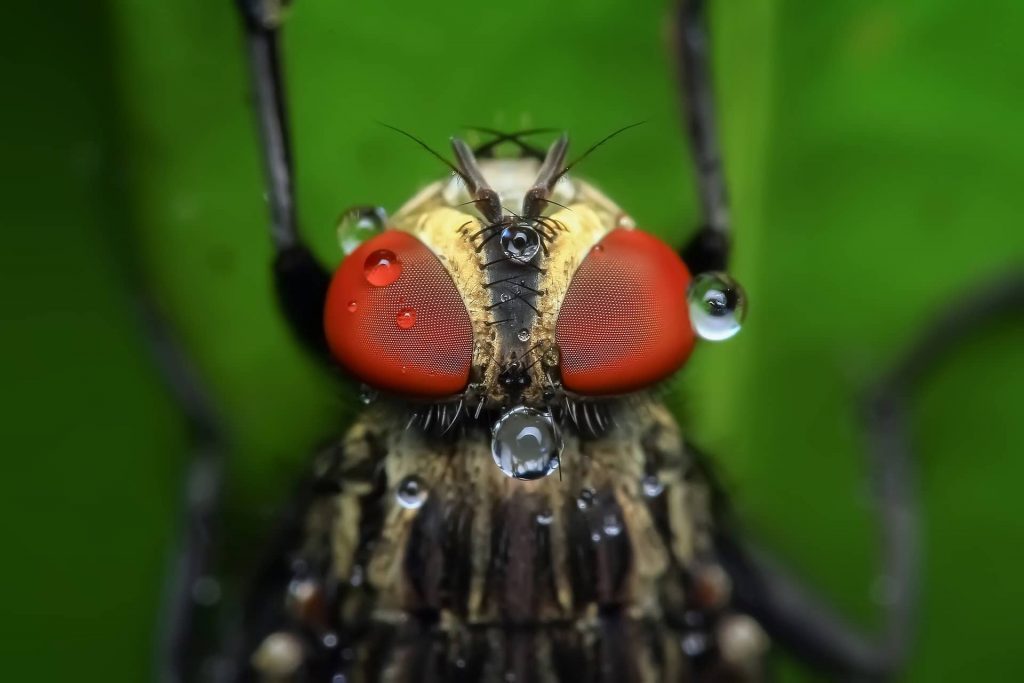Written by Janki Patel

Most people hate insects and are quick to get rid of them or run away from them. Houseflies, for example, are particularly viewed to be repulsive because they are known to breed and frequent around trash heaps, rotting food, and faecal matter where harmful bacteria can be found, which they, in turn, spread to their surroundings. This spread of bacteria is highly likely, considering that flies have the capability to fly 0.5 to 20 miles from their point of origin [1].
When one shakes hands with someone with a cold, he or she may catch the cold as well. Similarly, contact with a housefly or surfaces it may have touched raises the chances of contracting disease. This happens because houseflies tend to stay around decaying matter, which is vulnerable to the growth of many disease-causing organisms. Flies pick up these organisms with their legs and/or contract them once they feed on the matter. They then transmit these agents onto wherever they land via their legs, regurgitation, or waste excretion. With their constant need to find food and new breeding locations, they tend to fly around various locations, outdoors and indoors [2]. Hence, once humans get into contact with any contaminated item or location these flies may have been around, like food or kitchen countertops, the bacteria may be able to get into their bodies and cause disease. To date, there are around 65 diseases that houseflies are believed to contract such as typhoid, dysentery, cholera, and diarrhoea [1].
However, prevention and sanitation methods can help you avoid the spread of the disease-causing agents that the houseflies transmit. A great way to avoid houseflies from getting into your house is by keeping the doors and windows closed at all times or by installing a screen door. It is also important to make sure that the screens are free from holes [2]. Even with these preventative measures, houseflies might still be able to get in, so proper food storage, waste disposal, and overall sanitation is key. As houseflies tend to linger around unsanitary areas, a sanitary house may not attract them. If all else fails, fly traps and sprays may be utilized.
Even though the possible diseases transmitted by houseflies are relatively easy to treat, it is still better to prevent them from the get-go. The best option is to avoid attracting them by proper prevention and sanitation. If done so, houseflies may cease to fly around in houses all on their own.
References: